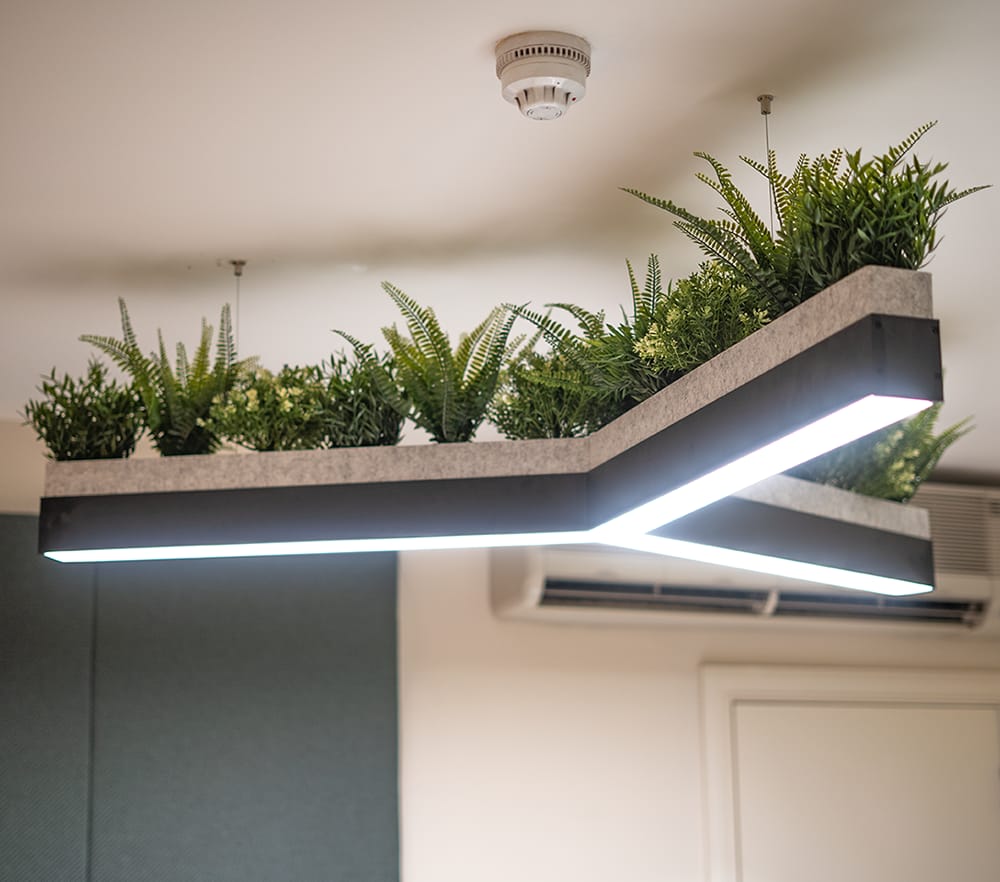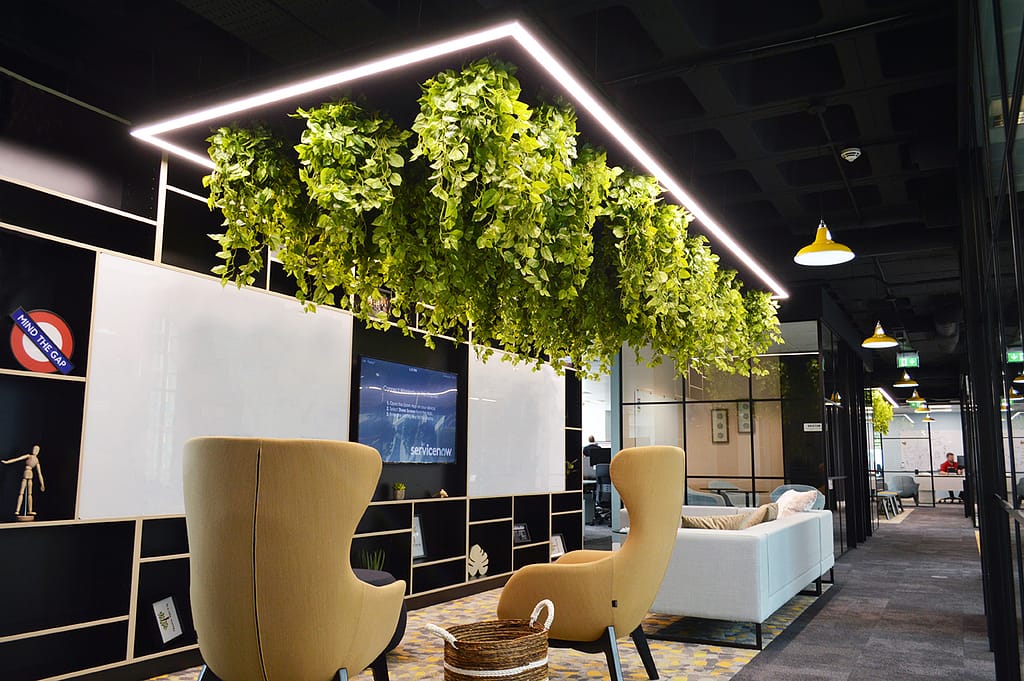Blog
What is Biophilic Lighting?
Biophilic lighting is a lighting design concept that seeks to mimic the natural light patterns and cycles experienced in nature, in an indoor setting. The goal is to create a harmonious and healthier environment that connects people with the natural world and promotes well-being. This type of lighting typically involves adjusting the intensity, colour temperature, and distribution of light to align with the circadian rhythm, the 24-hour biological cycle that regulates sleep and wakefulness in living organisms.

Biophilic lighting can be achieved through various means, such as:
- Dynamic control of light intensity, colour temperature, and distribution to imitate natural daylight conditions.
- Use of tunable white LED lights that can adjust colour temperature throughout the day.
- Incorporation of natural elements such as plants, water features, and materials like wood, stone, and glass into the lighting design.
- Designing lighting schemes that highlight patterns, textures, and shapes found in nature.
In addition to promoting well-being, biophilic lighting has been shown to have positive impacts on mood, productivity, and cognitive function.

biophilic lighting is becoming increasingly popular, especially in the field of architecture, interior design, and lighting design. With the rise of awareness about the impacts of lighting on human health and well-being, more and more designers and building owners are recognizing the benefits of incorporating biophilic principles into their lighting designs.
In addition, advances in lighting technology have made it easier and more cost-effective to implement biophilic lighting, which has further increased its popularity. LED lights, for example, offer high energy efficiency, long lifespan, and the ability to dynamically control colour temperature and intensity, making them well-suited for biophilic lighting applications.

The trend towards biophilic design in general, which encompasses not only lighting but also other elements such as indoor plants, natural materials, and connections to the outdoors, is also contributing to the popularity of biophilic lighting. As people seek to create healthier and more sustainable environments, biophilic lighting is seen as a key tool in achieving these goals.
Check out our range of biophilic lighting which incorporates artificial plants and natural materials to support a biophilic office design.



